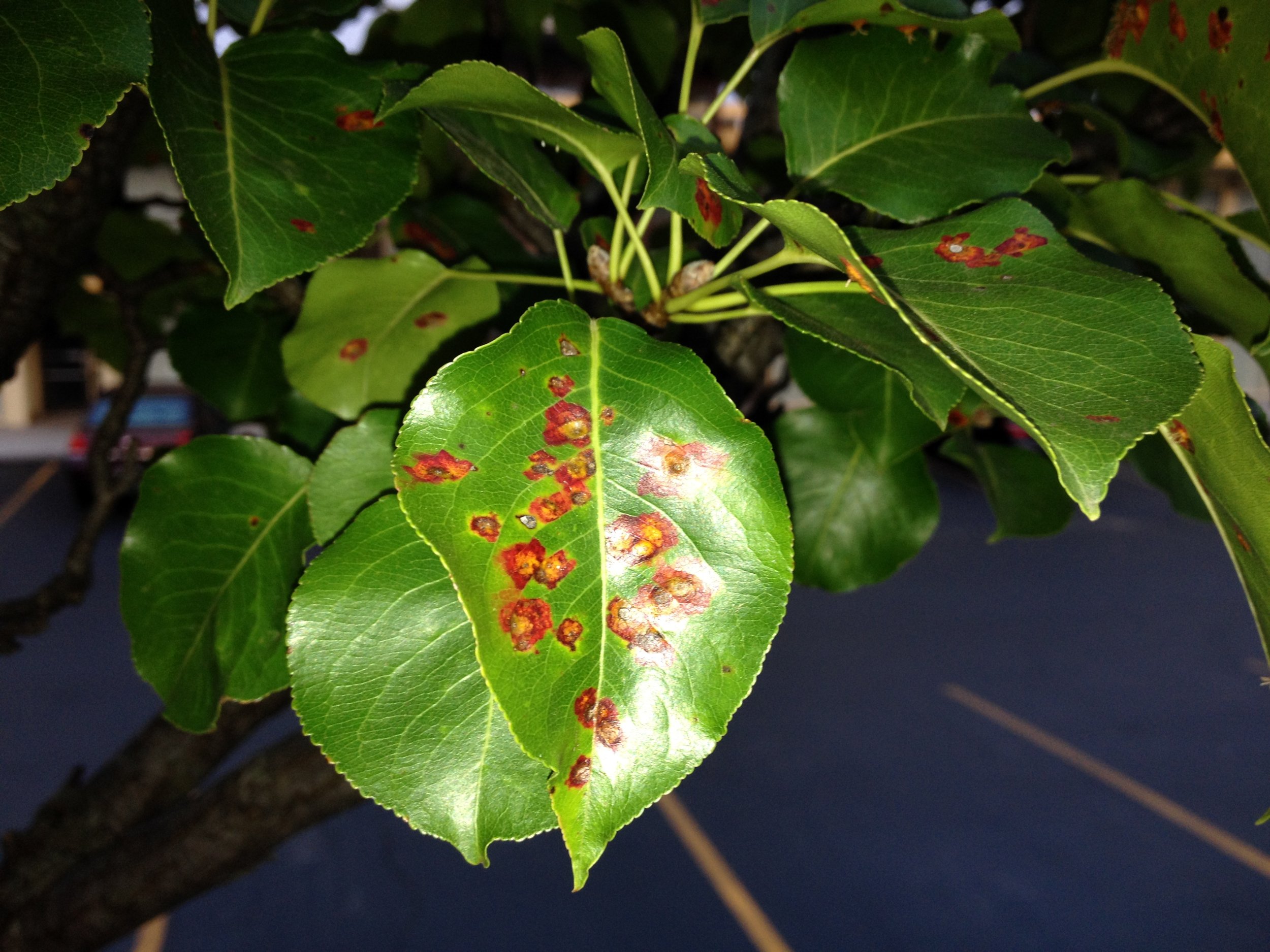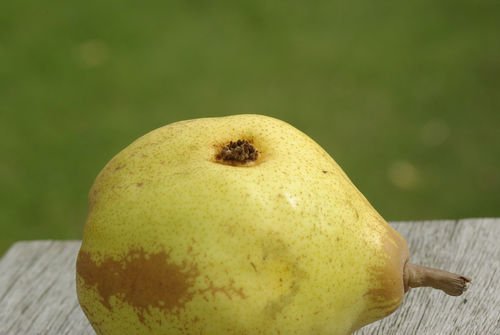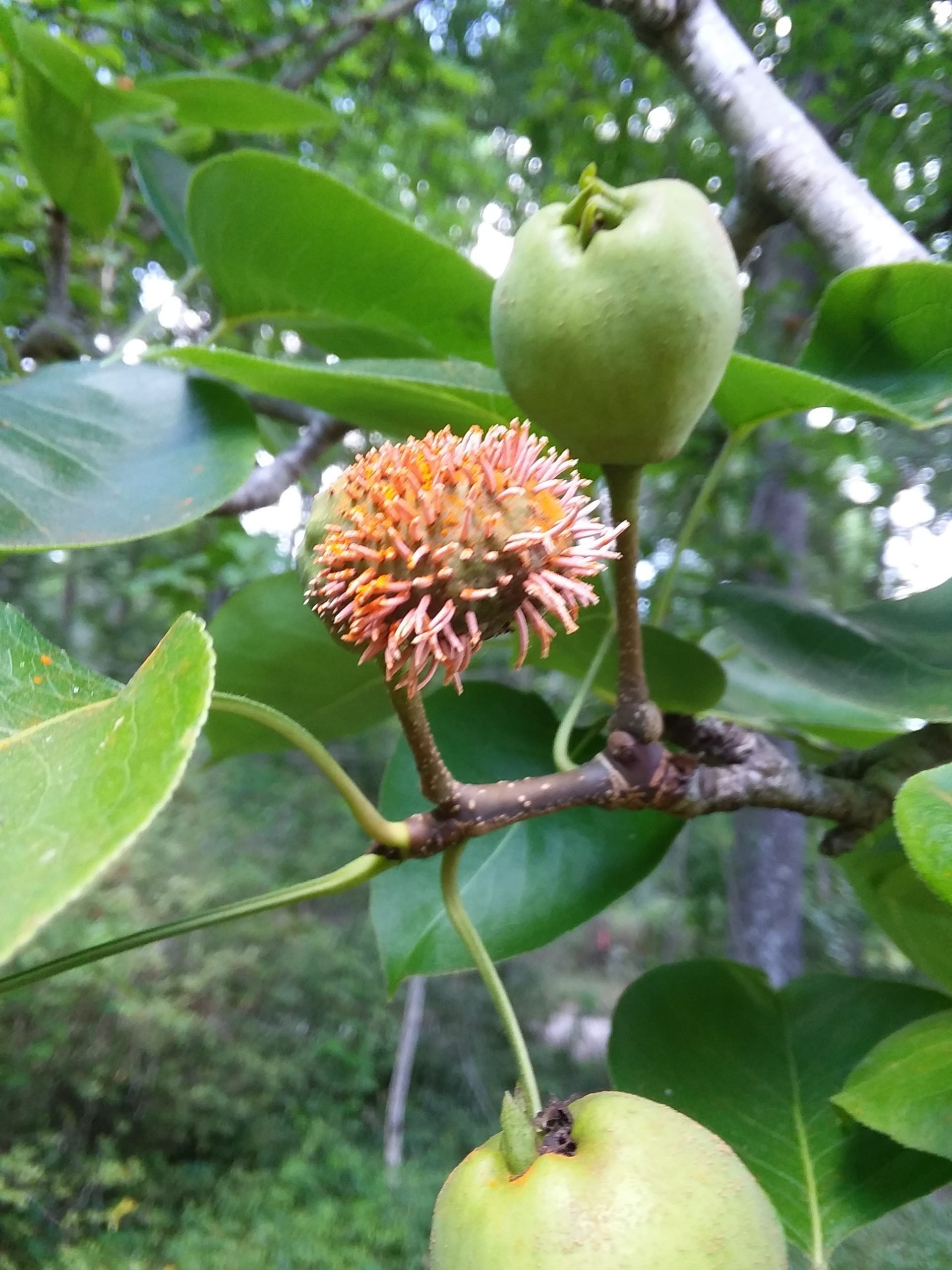Pear rust is a disease that causes spots on pear leaves and can also damage or destroy the flowers and fruit on the tree. Pear Rust requires the presence of an alternate host, the Eastern Red Cedar, to infect the pear. The disease is known as cedar hawthorn rust on the Eastern Red Cedar and is not the same disease as cedar apple rust.
For region-specific information, please contact your local Giving Grove partner. If you would like more information like this sent straight to your inbox, consider subscribing to The Serving, The Giving Grove’s quarterly newsletter.
Appearance:
On the pear, leaves, flowers and young fruits are susceptible to the infection.
Infected pear leaves show yellow to orange spots. If leaves are infected while very young, the degree of spotting and tissue distortion may be severe. If the leaves are larger when infected, the spots will be more spread out over the leaf. These spots will enlarge over the next few months and may coalesce.
In late spring, tube-like projections are visible on the fruits or underside of leaves.
Shedding of heavily spotted leaves in the summer is common when hot dry weather occurs.
On the Eastern Red Cedar, the disease forms hard galls that sprout orange to yellow growths in spring.
Treatment:
Consider removing nearby Eastern Red Cedar trees if this is an option, but the spores from conifers blow for ¼ a mile or more, so removing the source of these spores is seldom fully achievable.
During the late winter months, lightly prune the top/crown area of the pear tree to improve circulation of air through the crown.
Affected trees should be surveyed for any other sources of stress and supported by healthy practices like mulching, regular irrigation, and when/if possible, a soil sample analyzed (contact your local Giving Grove affiliate for this assessment)
Pear rust rarely causes significant harm to the health of the pear tree.
Sources: KSU Agricultural Extension, OSU Extension, Bartlett Tree Research Laboratories-University of Reading, Patrick L. Byers, Horticulture Specialist, and Michael Phillips, “The Holistic Orchard”.




